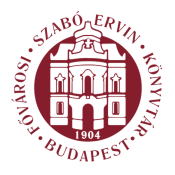Prakfalvi Endre: Roman Catholic Churches in Unified Budapest - Our Budapest (Budapest, 2003)
The Parish Church of St. Michael, 1941
area shaped in the very likeness of the dark reactionary stratum known as the Christian regime, then this district most certainly is it." Lágymányos, it goes on, with its clerical institutions of Szent Imre herceg útja (Prince St. Imre Road, today's Villányi út) is a true mirror of that regime (1932). Gyula Szekfü, a leading historian of the period, was to say that "the post-Trianon neo-Baroque architecture finds its best equivalent in the neo-Baroque mentality of society.’’ The construction of this neo-Baroque church was begun in 1937, and its consecration took place on 6 November 1938, the year the Eucharistic World Congress was held. Together with its environment, the basilican, three-aisle church, which has a reinforced concrete structure and a flush closure, does much to determine the surrounding cityscape. The pair of towers on the edges of its main front are topped with typical Baroque spires. It is in the projection between them, closed with a tympanum, that the triple-axis, porched entrance opens. On the balustrade of the portal stand the four saints of the Cistercian order—Harding St. Stephen, the founder of the order St. Bernard of Clairvaux, the Blessed Pope Eugene III and St. Robert (sculpted by József Damkó and Béla Markup). The pillars segmenting the wall are covered with richly carved Rococo ornamentation. The nave is topped by a level ceiling coffered between the reinforced concrete beams, a ceiling decorated with the floral motifs of a folk-Renaissance style. The main altarpiece, depicting a votive offering made by Prince St. Imre and the apotheosis of the Holy Crown, is the work of István Takács. On display in the porch is a plaster model of Kisfaludi Strobl’s Prince St. Imre monument. The restored monument of Kunó Klebelsberg, the foremost cultural politician of the inter-war period, stands between the church and the grammar school. Sculpted by Jenő Grantner in 1937, the statue used to stand in Eskü tér (today's Március 15. tér) and was damaged in the siege of Budapest. The Parish Church of St. Michael, 1941 Albertfalva tér, District XI "Archangel St. Michael protect us in our struggle lest we be vanquished on the dreadful Day of Judgement. ” (Supplication on 29 September, the feast day of St. Michael the Archangel) The church was built between 1940-41 to designs by Jenő Kismarty-Lechner (1878-1962) and Jenő Kismarty-Lechner Jr. (1909-93), assisted by structural engineer Pál E. Szontagh. 62
